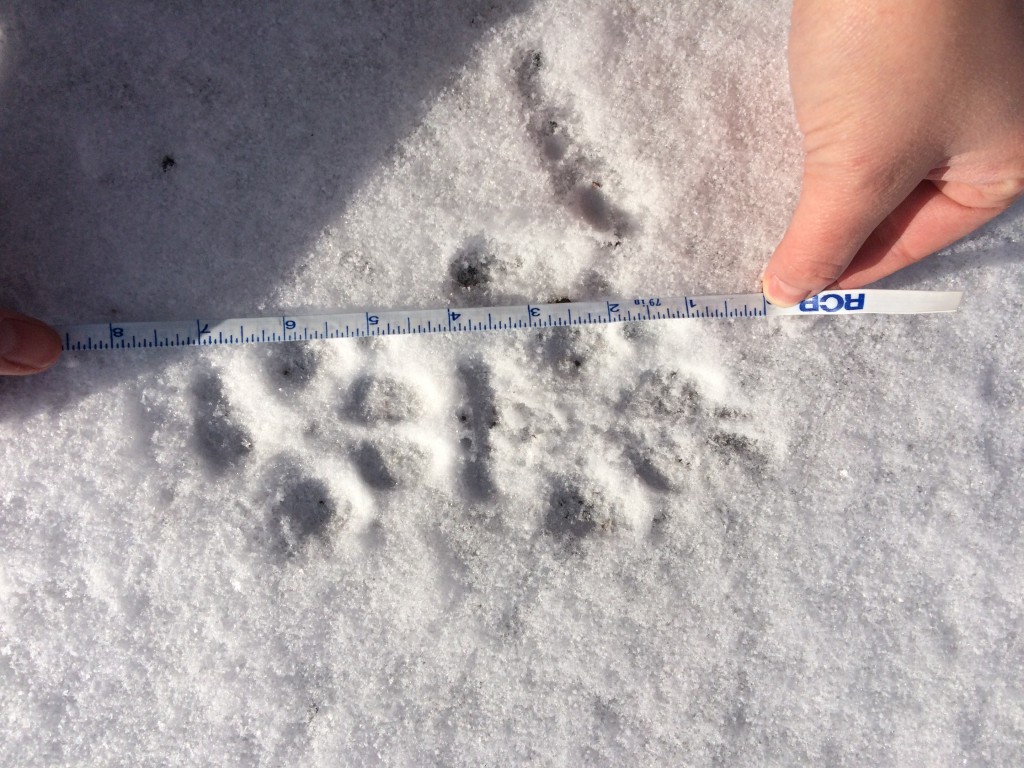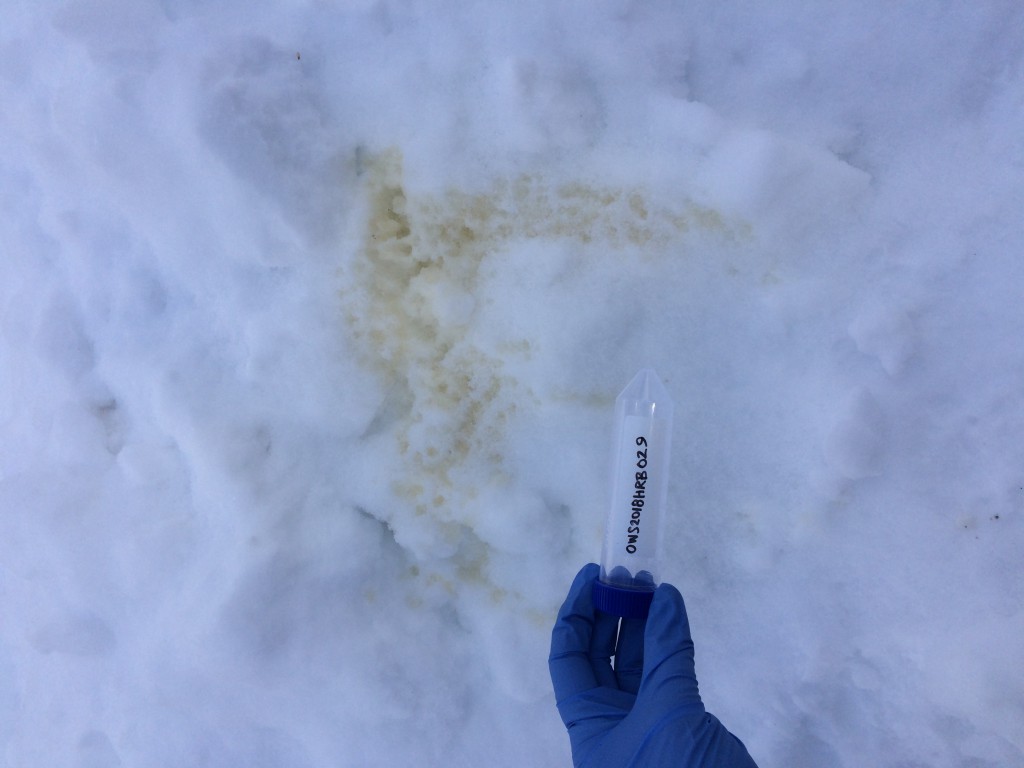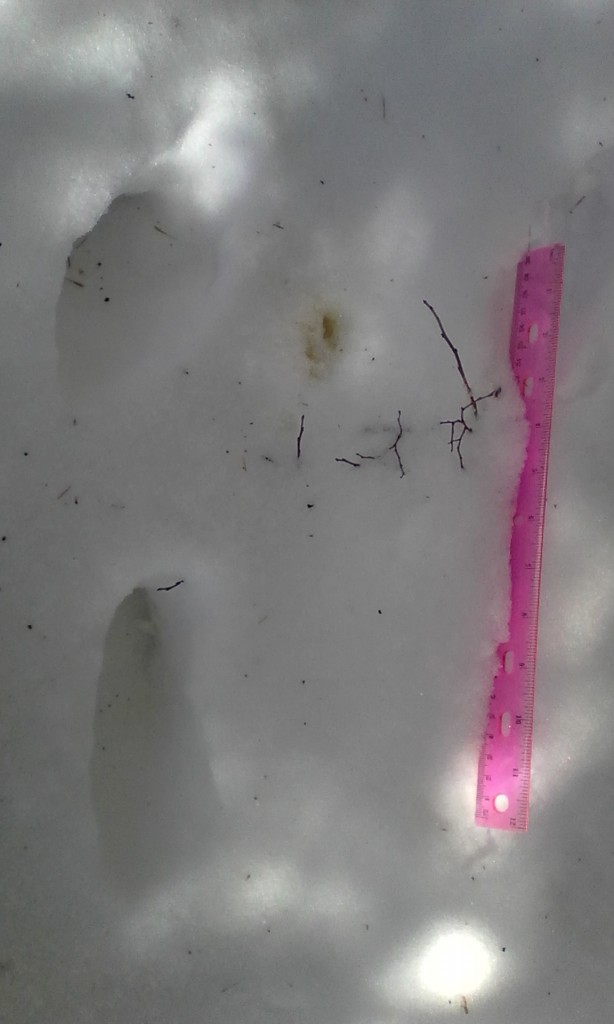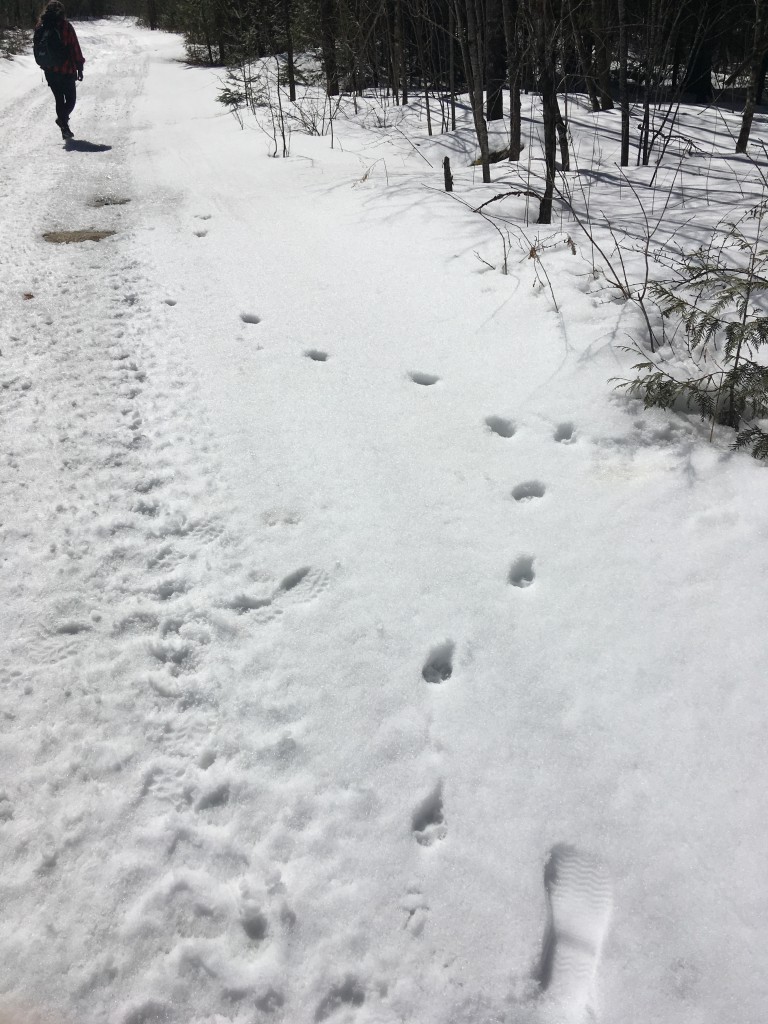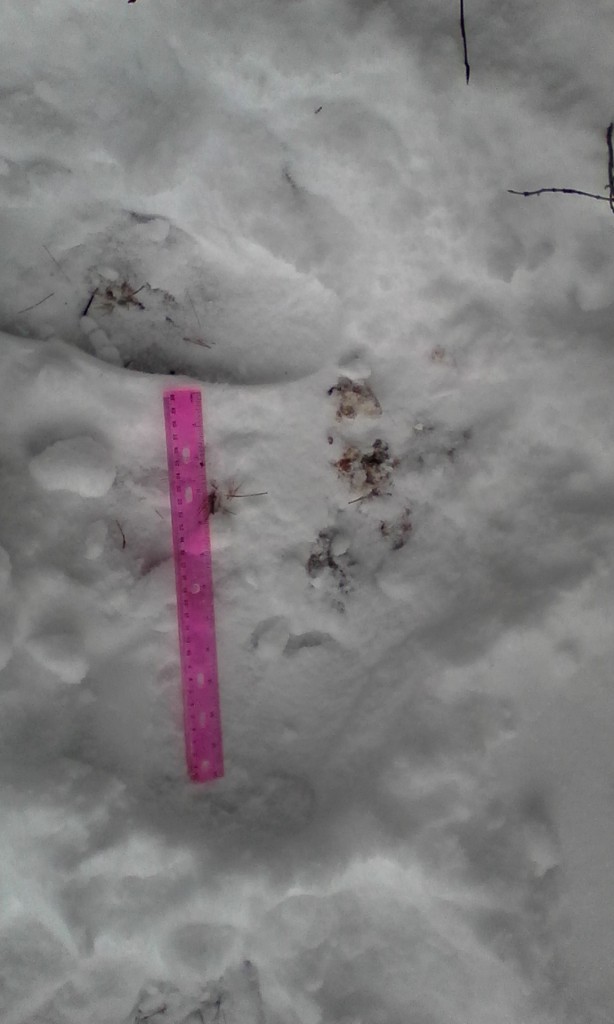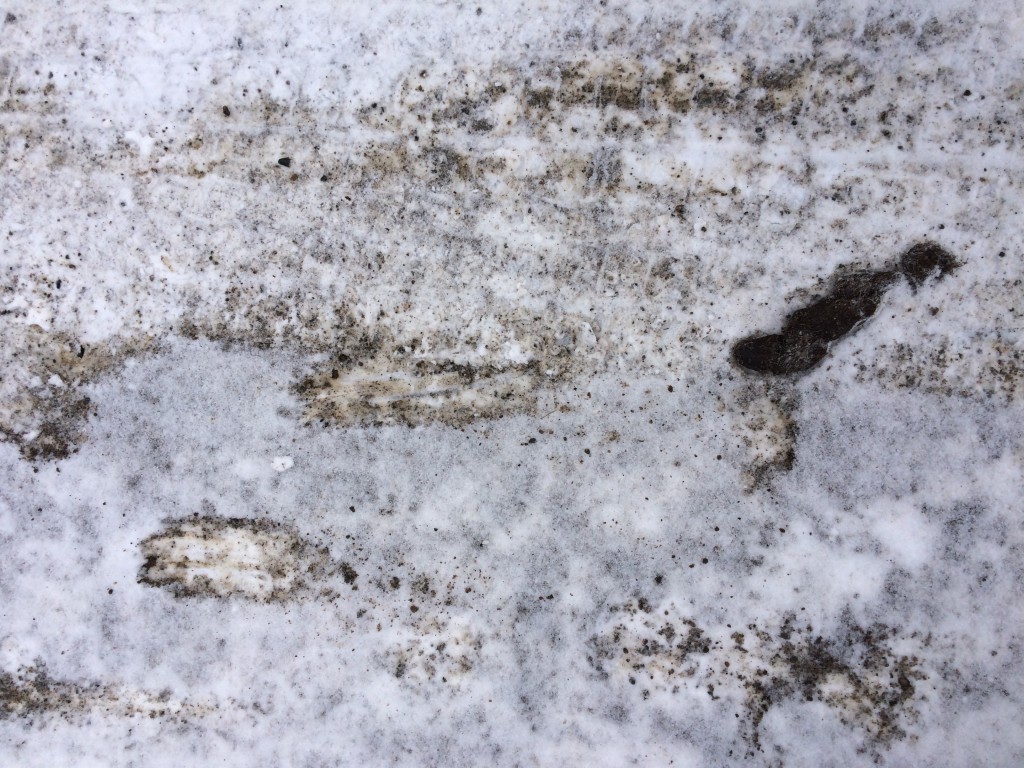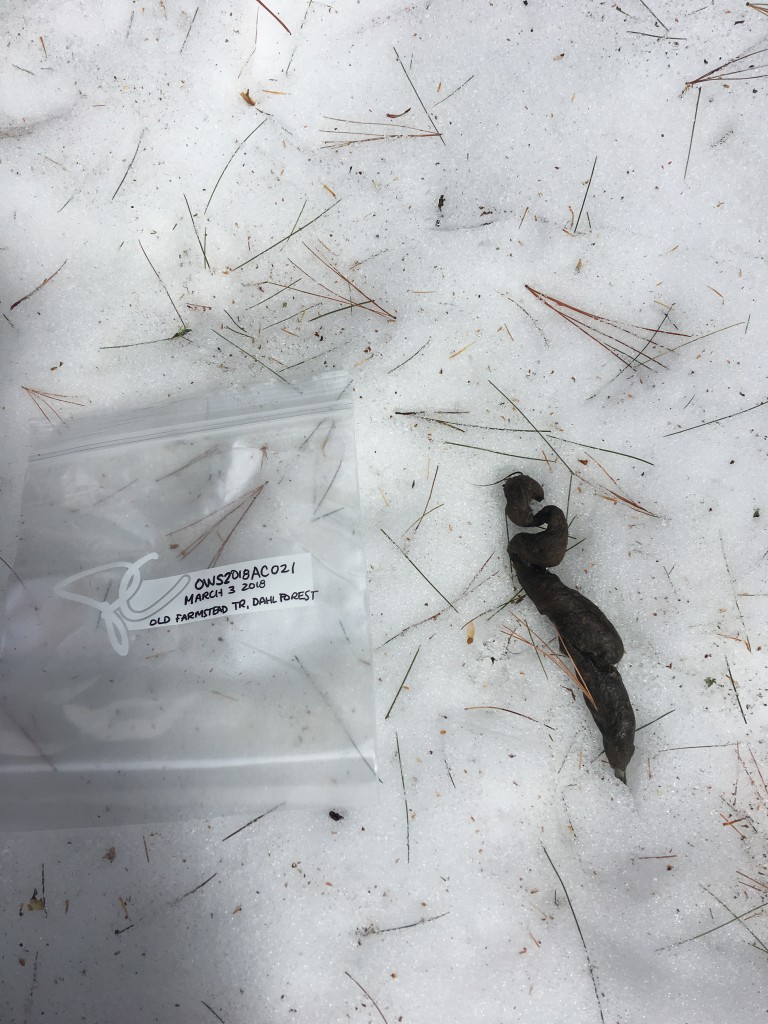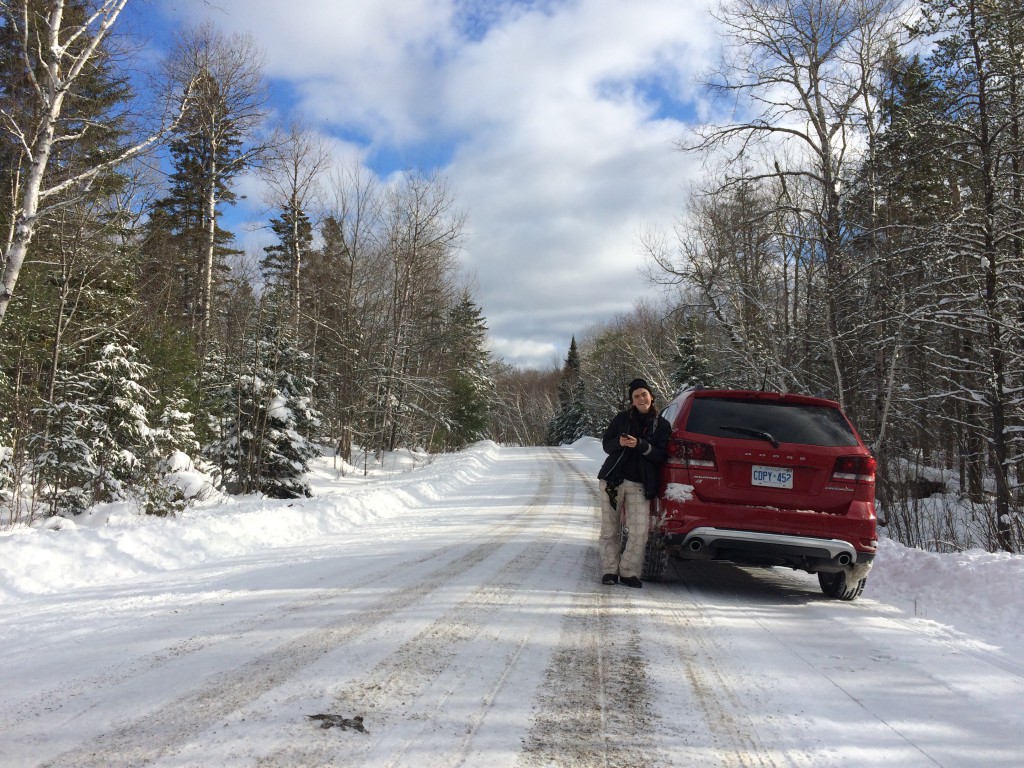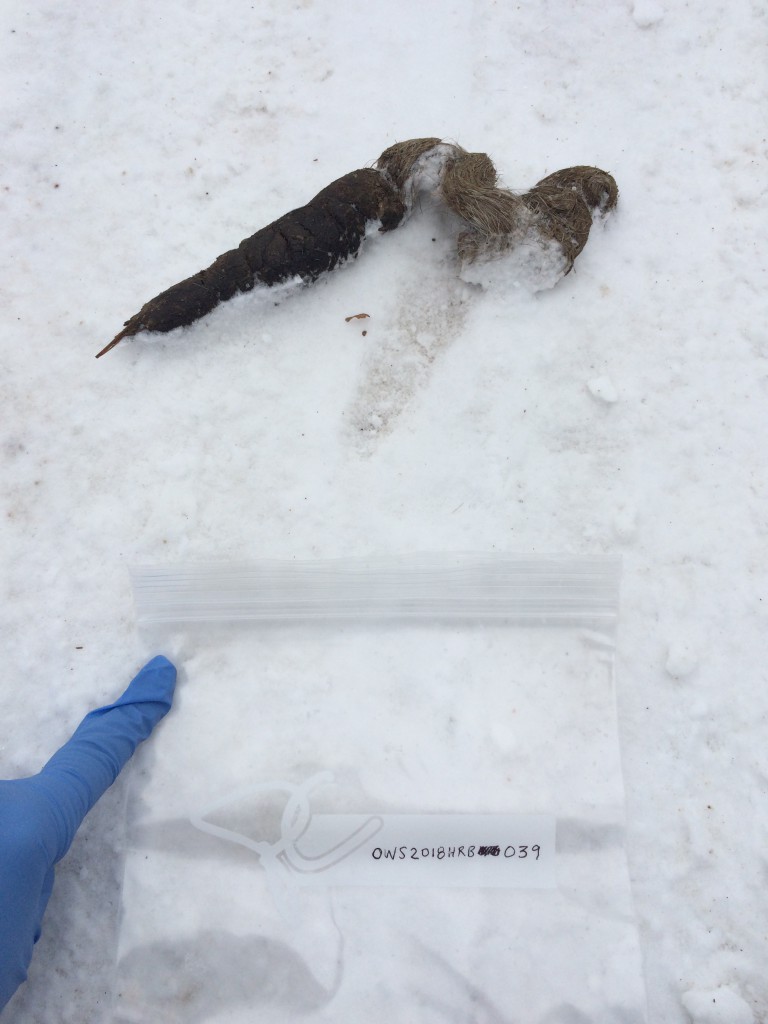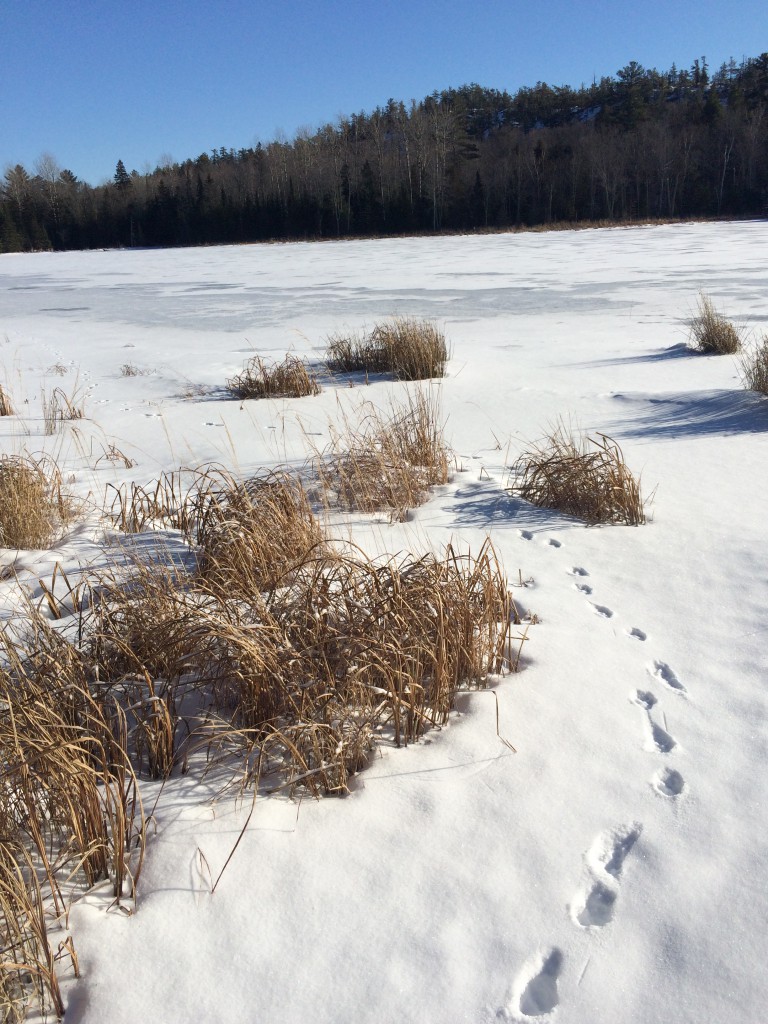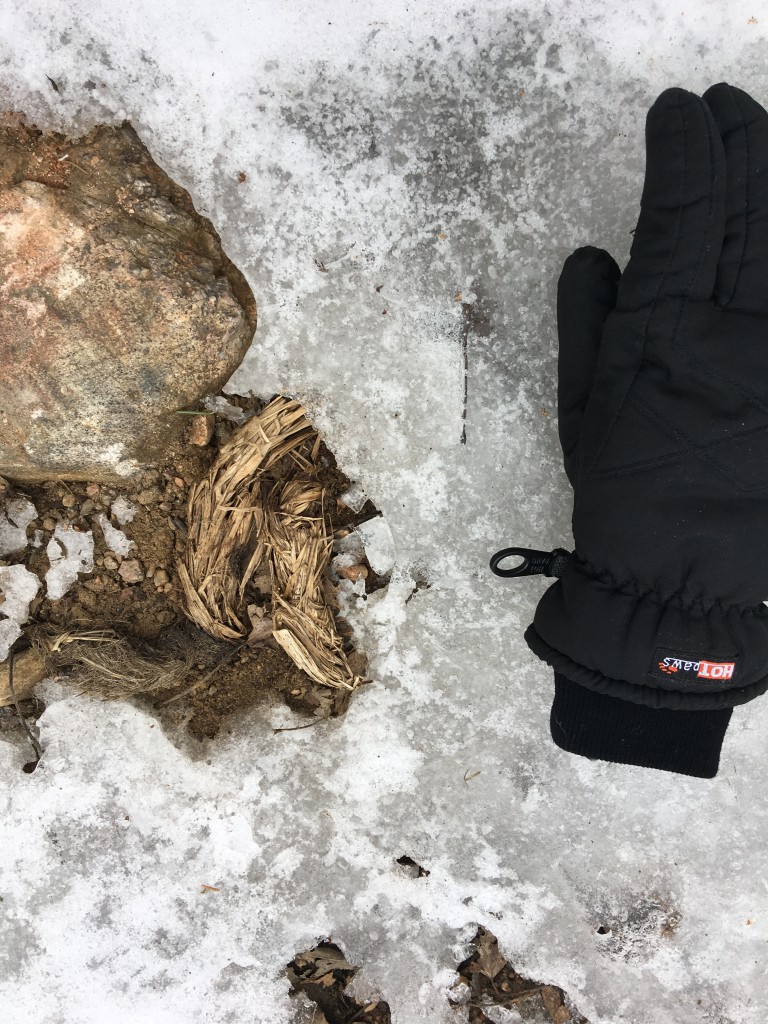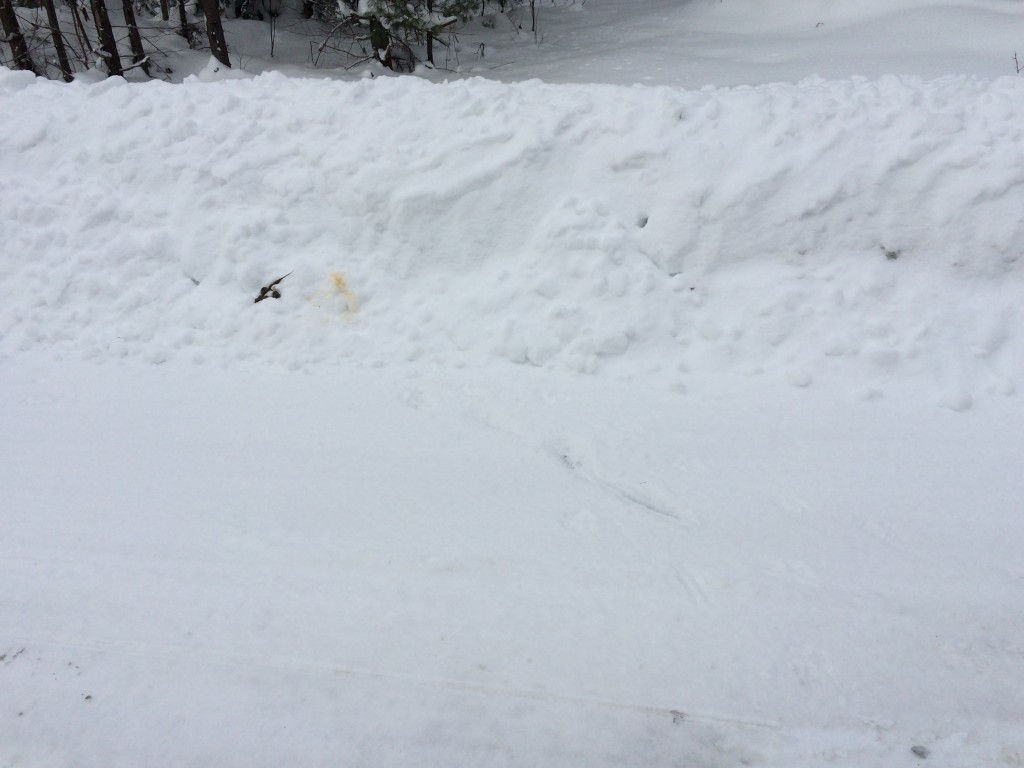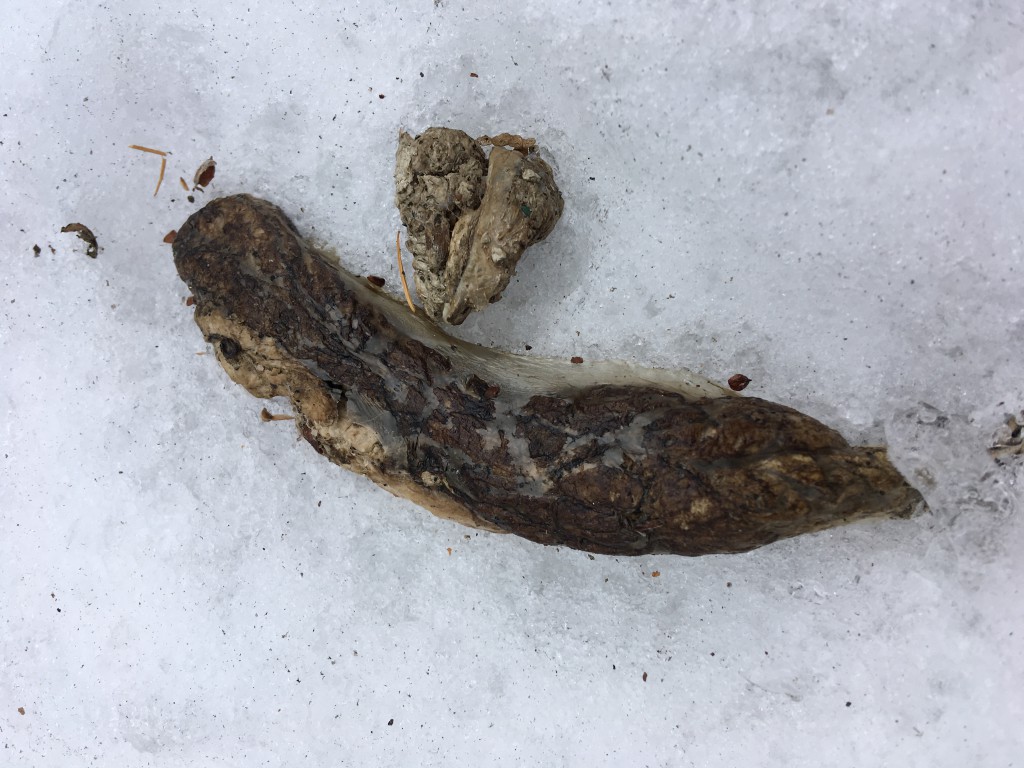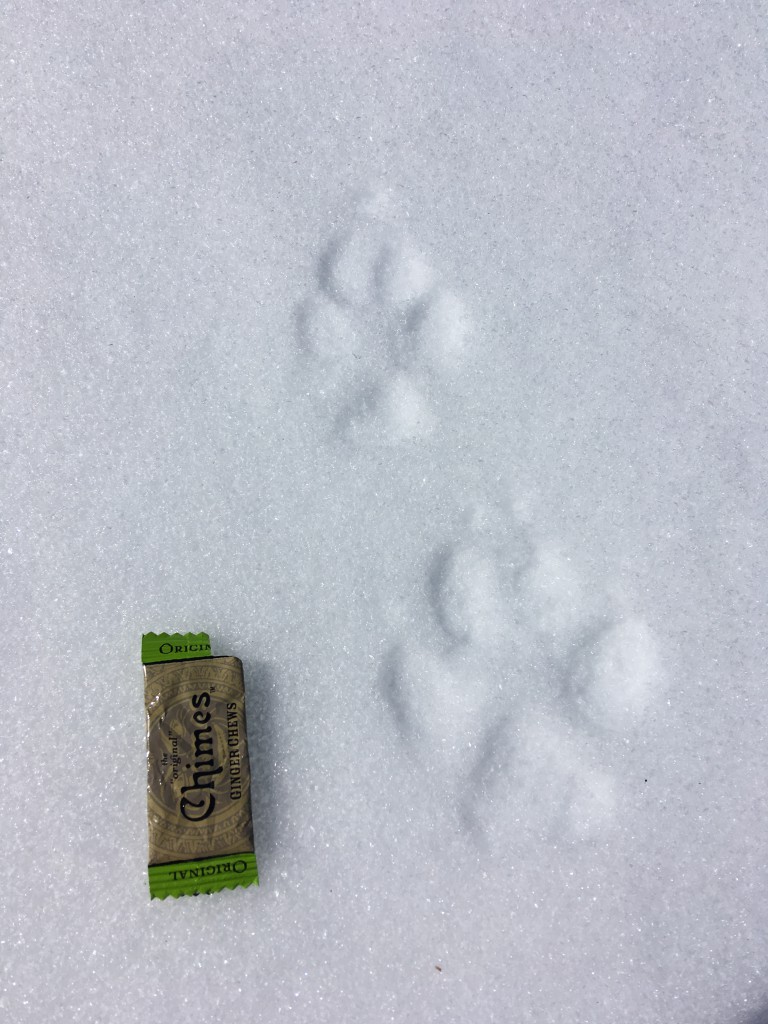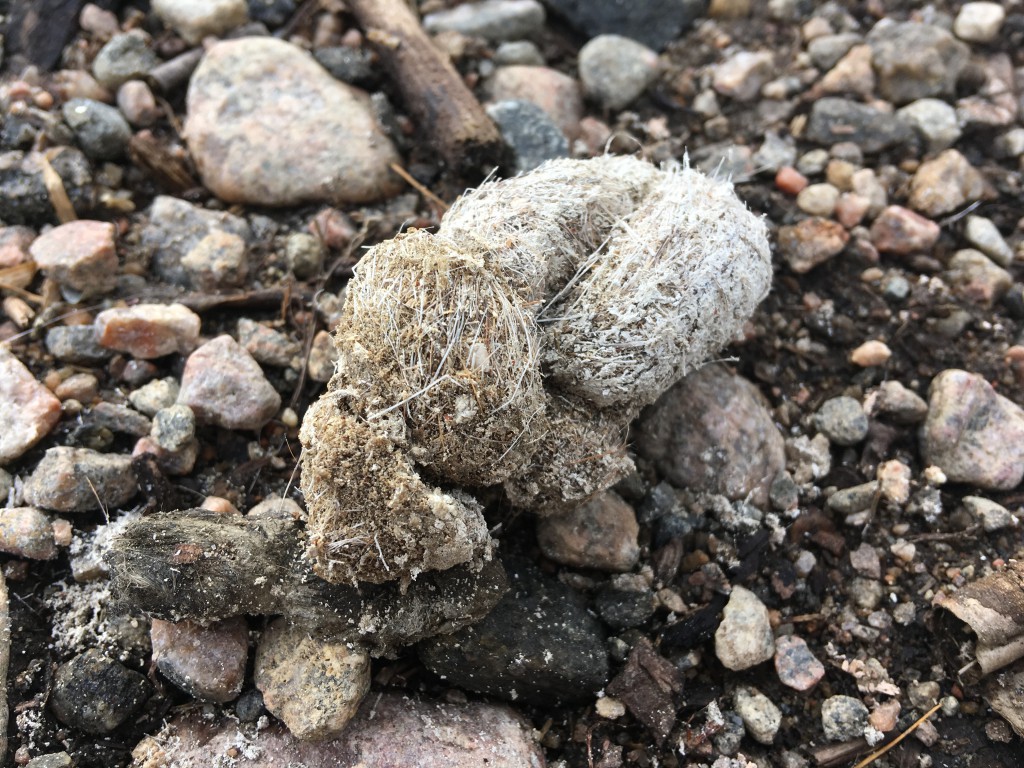Wild canids (wolves, coyotes and foxes) are territorial species, and they mark their territories using urine and scat. Since our sense of smell is not nearly as well developed, we rely on snow to be able to track wolves/coyotes and locate their urine marks and scats. Snow also helps keep the DNA intact for lab work.
Like people, wild canids prefer to walk along trails and roads to save energy, especially in winter when snow is deep. Since they want their markings to be easily noticed by other canids to communicate territory boundaries, they often urinate or defecate in noticeable areas.
Look for urine on the side of snowbanks, especially at the intersection of a trail or two roadways, or against the base of a prominent feature on the landscape (a big tree in the woods or a boulder of snow that falls back on to the road after the road has been plowed). If a urine sample smells skunky, it is a fox urine, and should not be collected. Do not collect urine samples in areas where dogs frequent.
Look for scat in the middle or on the side of the road. Sometimes a canid will jump on top of the snowbank and defecate there, or walk along a trail for some time and deposit scat at the top of a slope or on top of a big rock. Generally, wolves do not deposit scat in the middle of the woods, but they may defecate near bodies of water, such as shorelines of a big lake, or on a land bridge between two water bodies. Wild canids and domestic dogs eat different things and usually their scat looks noticeably different, so you can collect scats even in areas where dogs might be present.
Wolf and coyote tracks are bigger and more clearly defined than fox tracks, which often look fuzzy and do not sink deeply into snow. Wolves and coyotes can have tracks that look similar to medium-to -large dogs. However, dogs often travel in a zig-zag pattern, whereas wild canids usually walk in a very straight line, diverting only sometimes to investigate things on a trail. Wolves and coyotes have narrow chests and their tracks can look like a single line of individual paw prints; this pattern is called “direct register” because the rear foot falls directly on the spot where the front foot stepped. Dogs do not often have perfect direct register, being less efficient, “sloppy” walkers. Identifying wolf/coyote tracks apart from dog tracks can be difficult, but remember that dogs are usually accompanied by parallel set of human tracks!
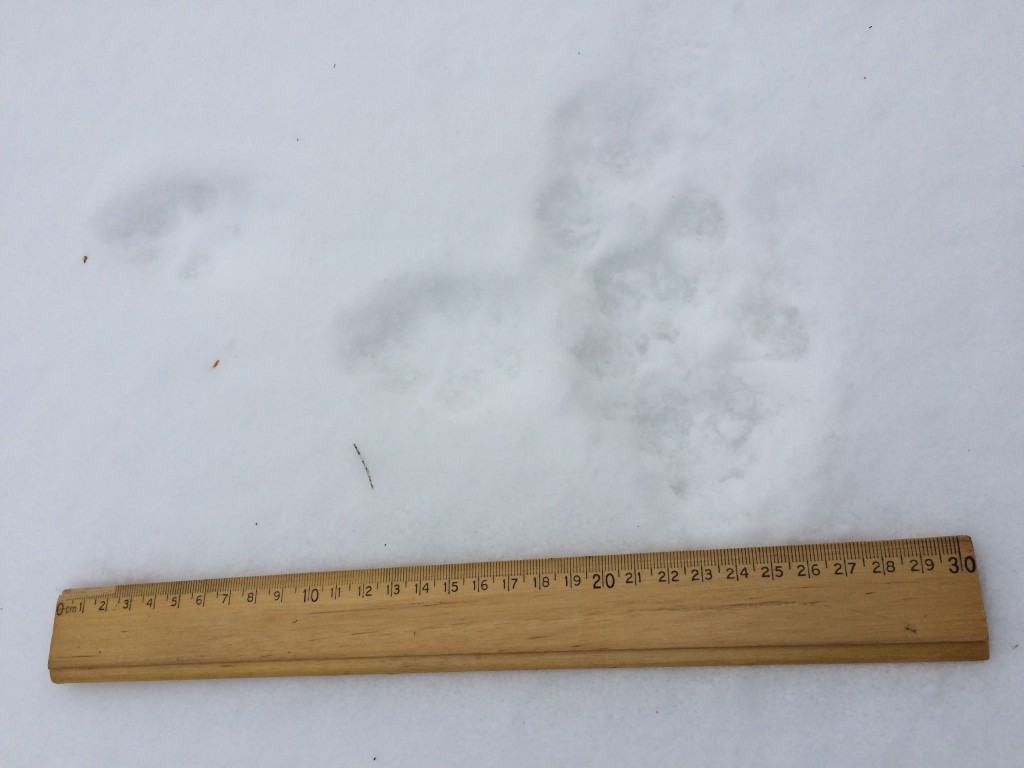
Two tracks intersection: smaller, fuzzier looking fox tracks (horizontal), and larger wolf/coyote tracks (vertical).


